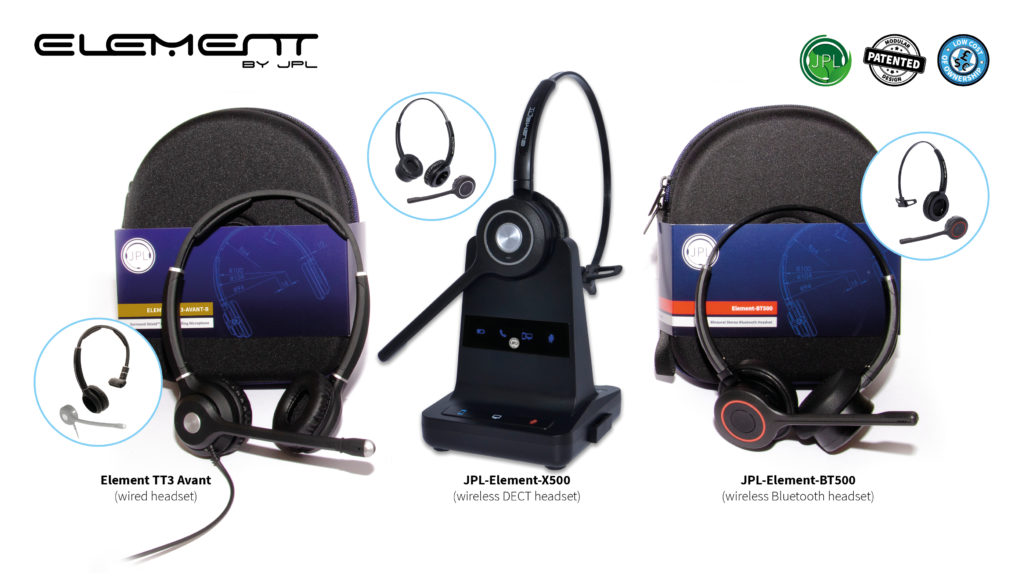In a hybrid work environment, quality headsets allowing clear communication with coworkers are becoming indispensable. This also means headsets are now a much more significant part of businesses’ costs than they used to be, making it important to choose them carefully.
“The business payback on quality headsets is almost immediate when you consider their contribution to staff productivity in remote working situations. More and more companies are investing in higher grade headsets, as they see them as part of their long-term working solution,” says James Clarke, CEO of JPL Telecom.
As a longtime leading manufacturer of UC-compatible and CC-compatible headsets, JPL Telecom came up with a family of modular headsets whose members allow utmost flexibility for users while being cost-effective.
The Element series allows a choice between the three main headset purchasing categories: wired (the TT3); wireless DECT (the X500); and Bluetooth (the BT500) – all of which are Plug-and-Play with an auto-setup configuration.
Versatile and Cost-Effective
“The idea is, when you buy a new headset, you normally have to decide at the time of purchase whether it’s going to be single-ear or binaural,” explains Clarke.
“But with these headsets, you don’t – since they all have interchangeable headbands. This means that if you start off with single-ear, and at some point find that you would prefer binaural – perhaps because you have to take part in high-concentration conversations – all you need to do is buy a binaural headband rather than a completely new headset.”
The JPL-patented modular headsets have become the company’s best-selling products for more reasons than one: not only do they allow enhanced flexibility and a choice of wearing styles for end-users – they are also sustainable, which in turn reduces the cost of ownership for businesses.
“The part of a headset that breaks first is typically the headband, and if the headband’s broken – you need to buy an entirely new headset, which can be a pretty significant cost,” explains Clarke.
“We realised that if we make the headband replaceable – it’s got to save customers money since the expensive part of the headset is actually the microphone boom arm. In other words: in two or three years’ time, when they come to replace their headset, they really should be buying just a new headband. Therefore, the cost of ownership is reduced significantly”
JPL have come up with this idea pre-COVID, but the pandemic has reinforced its relevance.
“With personal hygiene becoming crucial, odds are companies won’t want to pass the same headset between employees for safety reasons – which means they’d have to buy a new headset every time they hire a new employee. But with this patented modular headset system, they only have to buy a new headband, because the microphone boom arm doesn’t touch the skin.”
Sustainable Headsets: They Work
The TT3 wired headset – the oldest of the three Element models – is proving JPL’s sustainability idea to be working really well for their customers, as rebuys on its headband are now starting to come through.
“The TT3 was our number one selling headset before COVID, and we’re now getting more and more orders for its headbands. Right now, the headband is actually outselling the boom arm,” shares Clarke.
“This proves the point of sustainability and how people are using these products. The fact of the matter is, if you just buy a headband, it’s a fraction of the price of the overall headset, and you’re getting a high-grade headset for your money. It’s a win-win”
from UC Today https://ift.tt/2MzfkFM




0 Comments